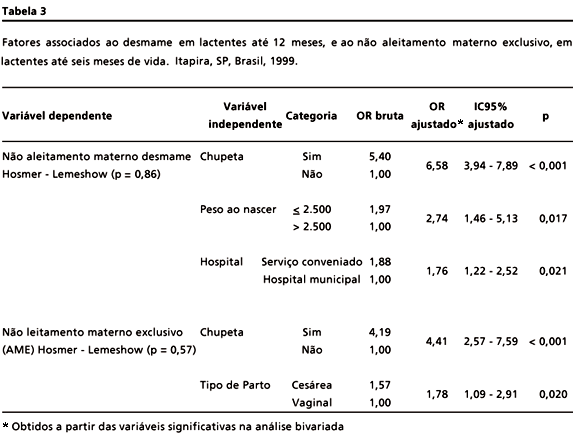OBJECTIVES: to analyze feeding practices in the first year of life and factors associated to breast-feeding and exclusive breast-feeding in the municipality of Itapira. METHODS: survey performed in 1999 with 679 infants under twelve months old in the National Vaccination Day as part of the Project Breast-Feeding & Municipalities. Association between breast-feeding and independent variables of birth conditions, bottle use, pacifiers and maternal characteristics, was assessed through multiple logistic regression. RESULTS: the average age of the mothers was of 25,5 years old, 41% were primiparae and 51,7% of the deliveries were through C-sections. The average weight at birth was of 3.223g. It was noted that 98,1% of the infants were breast-fed during the first 30 days, but there was an early introduction of tea, water and other types of milk. Exclusive breast-feeding prevalence was of 64,8% in the first month dropping to 45% in the second month and 30,1% between four and six months. At twelve months 61,6% of the infants were breast-fed. Variables associated to weaning were: the use of pacifiers (OR 5,58; CI95%: 3,94 -7,89), low birth weight (OR 2,74; CI95%: 1,46 - 5,13) hospital of birth (OR 1,76; CI95%: 1,22 - 2,52). The reason for exclusive breast-feeding interruption in the first six months was the use of pacifiers (OR 4,41; CI95%: 2,57 - 7,59) and C-section births (OR 1,78; CI95%: 1,09 - 2,91). CONCLUSIONS: prevalence of breast-feeding and exclusive breast-feeding is still far from the WHO current recommendations.
Breast feeding; Bottle feeding; Nutrition surveys




